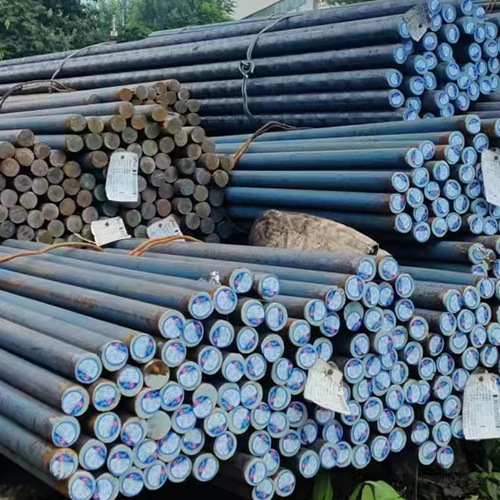Introduction

Carbon steel 1018 is a versatile and widely used low-carbon steel alloy. Renowned for its excellent machinability, weldability, and formability, it finds applications across numerous industries. This comprehensive guide will delve deep into the properties, composition, and applications of carbon steel 1018, making it an invaluable resource for engineers, manufacturers, and anyone interested in materials science.
Composition and Properties
Chemical Composition
The numerical designation “1018” in carbon steel 1018 provides significant clues about its composition. The initial digit, “1,” signifies that it is a carbon steel. The subsequent two digits, “01,” represent the approximate carbon content, which in this specific case is 0.18%. Other alloying elements, such as manganese, phosphorus, and sulfur, are present in minor quantities and contribute significantly to the steel’s overall properties.
Mechanical Properties
Carbon steel 1018 offers an exceptional balance of strength, ductility, and toughness. Its mechanical properties include:
- High Tensile Strength: This characteristic makes it highly suitable for applications that demand resistance to substantial pulling forces.
- Good Ductility: It exhibits excellent formability, allowing it to be easily shaped into various complex forms without compromising its structural integrity.
- Excellent Weldability: It can be seamlessly joined using a wide range of welding processes, ensuring strong and reliable connections.
- Good Machinability: It can be effortlessly cut, drilled, and machined, making it a preferred choice for manufacturing processes.
Applications of Carbon Steel 1018
The versatility of carbon steel 1018 has led to its widespread adoption in a diverse range of applications. Some of the most common uses include:
- Automotive Industry: It is extensively used in the production of critical components such as shafts, gears, and fasteners, contributing to the overall durability and performance of vehicles.
- Construction Industry: It serves as a fundamental building block in the construction industry, utilized in structural members, fasteners, and reinforcement bars, ensuring the strength and longevity of structures.
- Machinery and Equipment: It plays a crucial role in the manufacturing of machine parts, tools, and fixtures, enhancing their efficiency and reliability.
- General Fabrication: Its versatility enables it to be used in a wide array of custom parts and components, catering to the diverse needs of various industries.
Heat Treatment
Carbon steel 1018 can undergo heat treatment processes to further enhance its properties. Common heat treatments include:
- Annealing: This process involves heating the steel to a specific temperature followed by slow cooling, resulting in a softer and more ductile material, which significantly improves its machinability.
- Normalizing: This heat treatment involves heating the steel to a higher temperature followed by rapid cooling in air, refining the grain structure and improving mechanical properties such as strength and toughness.
- Quenching and Tempering: This two-step process involves rapidly cooling the steel from a high temperature, followed by reheating it to a lower temperature, resulting in increased hardness and strength, making it suitable for applications demanding high performance.
Comparison of Carbon Steel 1018 with Other Steels
| Property | Carbon Steel 1018 | Stainless Steel 304 | Aluminum Alloy 6061 |
|---|---|---|---|
| Carbon content (%) | 0.18 | Low | None |
| Corrosion resistance | Low | High | Good |
| Strength | Moderate | High | Moderate |
| Ductility | Good | Good | Good |
| Cost | Low | High | Moderate |
Advantages and Disadvantages

Advantages
- Low Cost: It is a cost-effective material, making it an attractive choice for various applications.
- Excellent Machinability: Its superior machinability reduces manufacturing time and costs.
- Good Weldability: It can be easily welded, ensuring strong and reliable joints.
- High Ductility: Its high ductility allows it to be formed into complex shapes without cracking.
- Versatile Applications: Its versatility enables it to be used in a wide range of industries and applications.
Disadvantages
- Susceptibility to Corrosion: It is prone to corrosion, especially in harsh environments.
- Limited Strength: Compared to high-strength steels, it offers limited strength.
- Not Suitable for High-Temperature Applications: It is not suitable for applications involving high temperatures.
Conclusion
Carbon steel 1018 stands as a versatile and cost-effective material with a wide array of applications. Its exceptional machinability, weldability, and formability make it a popular choice across numerous industries. By gaining a comprehensive understanding of its composition, properties, and applications, engineers and manufacturers can make informed decisions when selecting materials for their projects.
FAQ
What is the difference between carbon steel 1018 and 1020?
Carbon steel 1020 has a slightly higher carbon content, resulting in increased strength but decreased ductility.
Can carbon steel 1018 be hardened?
Yes, carbon steel 1018 can be hardened through heat treatment processes such as quenching and tempering.
Is carbon steel 1018 magnetic?
Yes, carbon steel 1018 is magnetic due to its iron content.
